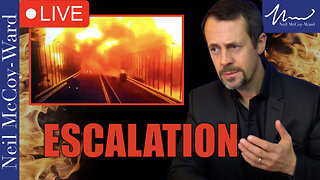Som ET - 35 - Universe - James Webb - Southern Ring Nebula
The bright star at the center of NGC 3132, while prominent when viewed by NASA’s Webb Telescope in near-infrared light, plays a supporting role in sculpting the surrounding nebula. A second star, barely visible at lower left along one of the bright star’s diffraction spikes, is the nebula’s source. It has ejected at least eight layers of gas and dust over thousands of years.
But the bright central star visible here has helped “stir” the pot, changing the shape of this planetary nebula’s highly intricate rings by creating turbulence. The pair of stars are locked in a tight orbit, which leads the dimmer star to spray ejected material in a range of directions as they orbit one another, resulting in these jagged rings.
Hundreds of straight, brightly-lit lines pierce through the rings of gas and dust. These “spotlights” emanate from the bright star and stream through holes in the nebula like sunlight through gaps in a cloud.
But not all of the starlight can escape. The density of the central region, set off in teal, is reflected by how transparent or opaque it is. Areas that are a deeper teal indicate that the gas and dust are denser – and light is unable to break free.
Audio: Som ET - 35 - Universe
Credit: NASA, ESA, CSA, STScI
#NASA #jameswebb #Hubble #ESA #space #science #astronomy #universe #telescope #cosmos #galaxy #nebula #stars
-
 LIVE
LIVE
Right Side Broadcasting Network
5 days agoLIVE REPLAY: President Trump to Hold a Rally in Wilkes-Barre, PA - 8/17/24
7,908 watching -
 6:33:09
6:33:09
SNEAKO
15 hours agoUFC WATCH PARTY SNEAKO X ZHERKA
165K110 -
 10:02:50
10:02:50
Gun Owners Of America
15 hours agoGOALS 2024 | DAY 1
109K22 -
 13:21
13:21
JoBlo Originals
10 hours agoWhat is Woke Cinema? Part II (Strong Female Leads)
74.5K49 -
 1:20:50
1:20:50
Matt Kim
1 day agoConservative Men Try to THINK like Liberals *seriously* | Matt Kim #107
68.7K24 -
 2:14:33
2:14:33
Jewels Jones Live ®
1 day agoExposing the Leftists LIES | A Political Rendezvous - Ep. 88
85.6K38 -
 2:18:09
2:18:09
The Nima Yamini Show
10 hours agoNima EXPOSES Dan Bilzerian's Lies on PBD Podcast! You Won't Believe What He Said! 😱
73.1K46 -
 1:06:23
1:06:23
Steve-O's Wild Ride! Podcast
2 days agoAdam Ray Is Hilarious As Dr. Phil - Wild Ride #228
108K22 -
 2:26:22
2:26:22
LumpyPotatoX2
13 hours agoFortnite on Rumble- #RumbleTakeover
108K3 -
 15:15
15:15
Neil McCoy-Ward
12 hours ago🔥 Time's Almost Up… 🔥
99.3K48